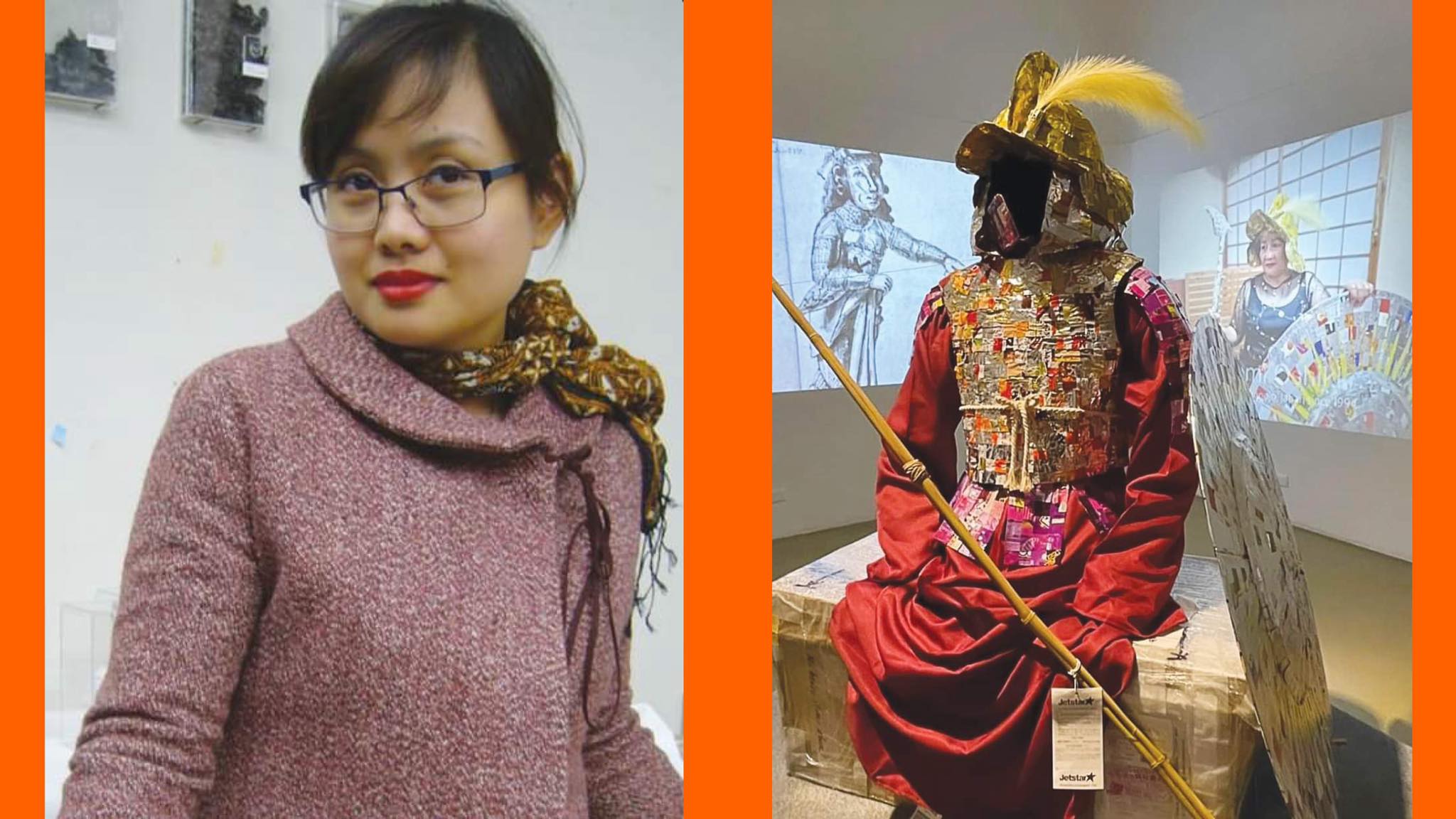The Karakoa Warriors
There's art in venturing into uncharted territories
Mervy Pueblo reimagines Overseas Filipino Workers (OFWs), in her latest exhibit “Karakoa Journeys: From Past to Present” at Galleria Duemila as “Karakoa Warriors,” or fearless adventurers who venture into uncharted territories to secure a better future for their families and communities. Her art is an ode to the tenacity and resilience of these modern-day heroes.

Pueblo’s inspiration for the exhibit comes from the pre-colonial history of Filipinos as seafaring people who traversed vast distances for trade and exploration. She sees a parallel in the journeys of OFWs, who leave their families behind to seek opportunities in foreign lands.
“Karakoa warriors, according to history, have chartered the sea and gone to foreign lands for the same reason as OFWs. They muster the courage to leave the family behind, or to live in isolation or a lonely life in another country to ensure financial security. They face potential discrimination, unfair labor practices, loneliness, and miscommunication, yet they persevere. My position for this exhibit is aligned with Altermodern—as defined by Nicolas Bourriaud and Marcel de Certeau’s ‘Practice of Everyday’,” she says.
Her art is not just visually stunning, it’s deeply empathetic. Through installations and video art, she captures the struggles and aspirations of OFWs. She wants to evoke empathy and understanding. She wants viewers to see beyond the stereotypes and recognize the humanity of OFWs. Each piece speaks of the grit and determination of OFWs, showcasing that they are not just workers but individuals with stories, dreams, and families who depend on them. It’s about acknowledging the sacrifices of OFWs and their families, and appreciating their contributions to our society. Her creative process is deeply collaborative as she worked closely with OFWs in Japan, incorporating their stories and experiences into the exhibit.

“The responses of the OFWs I’ve worked with in Japan became the soul of the project,” Pueblo explains. “Sure, their stories are not unique but giving them the opportunity to be heard and seen as human beings, not just laborers, was important. The artworks were first exhibited in Nakanojo Museum of Folk and History and we have received feedback from Japanese visitors that they now understand as to why when a group of Filipinos gather, they are rowdy and over excited because they live in great stress, and that they have a renewed appreciation of OFWs.”
The choice of materials for her art is not arbitrary. She used collected, clean foil packets from foreign products and transformed them into weapons and armor and as token of their sacrifices and unwavering commitment to their families. Her artistic journey is not confined by stylistic conventions. She sees art as a language for observation and reflection, a tool to engage with the world and its complexities.

“For this installation, the collected, sorted, cleaned-up foil packets from foreign products were turned into weapons or armor as a metaphor to the love, courage, and strength of OFWs. They represent the pasalubong they send back to their loved ones. If there are foil packages from local products, it represents the pabaon that their loved ones have gifted their OFW family member. My art is not about style. It’s about life. I use art to think, to share my observations, and to connect with others,” she shares.
Mervy’s studio is the world itself. She finds inspiration in everyday encounters, in the bustling streets and the quiet corners of the digital realm
“A typical day for me,” she says, “involves taking walks, observing, sketching, taking notes. It’s a constant process of gathering information and processing it through my artistic lens. I’m always looking for new ways to explore the world through art. I want my work to spark conversations, challenge perspectives, and leave a lasting impact,” says ends.
Exhibit runs until Jan. 31, 2023 at Galleria Duemila at 210 Loring St., Pasay City, Manila; [email protected].